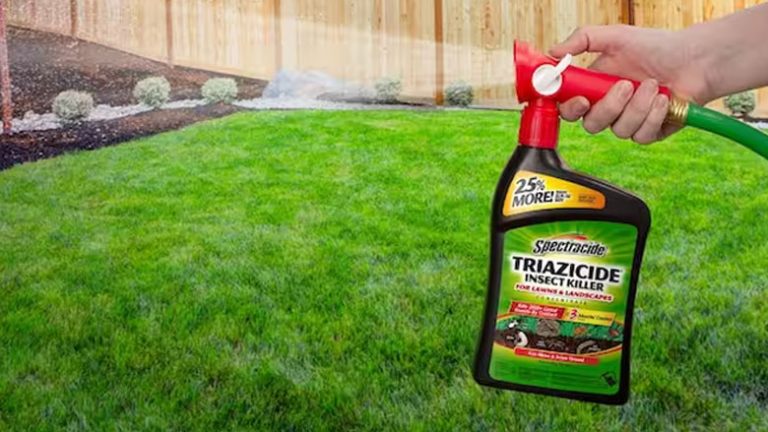Why Is My Sunflower Drooping [Secrets Behind Sunflower Drooping]
If your sunflowers are looking a bit down, don’t worry. There are a few common reasons for drooping. It could be due to overwatering, poor soil drainage, or even strong winds. Remember to water them right, ensure good soil, and support them in the breeze.
Let’s delve into the world of sunflowers, exploring their elegance, the reasons behind their drooping, and effective solutions to restore their radiant stature.

Natural Elegance of Sunflowers
Sunflowers, those towering emblems of sunny days, go through a remarkable journey as they grow and flourish. From the tiny seed to the majestic bloom, each growth stage is a testament to nature’s ingenuity.
Their iconic structure comprises the central disk, composed of hundreds of florets, encircled by vibrant petals that mimic the sun’s radiant rays. Understanding their growth anatomy sets the stage for diagnosing and remedying the issue of drooping.
Common Reasons for Drooping Sunflowers
Sunflowers, those majestic blooms that bring a touch of sunshine to any garden, can sometimes leave us puzzled when they start drooping. Don’t fret – it’s not uncommon for these radiant giants to experience a bit of a slump. Let’s dive into the Common Reasons behind drooping sunflowers.
1. Lack of Water
Just like we humans need our daily dose of hydration, sunflowers to thirst for water to keep their spirits high. A lack of water can lead to drooping stems and wilting leaves. Sunflowers have an extensive root system, and if those roots don’t get the water they crave, the entire plant can suffer.
So, if you’re noticing your sunflower looking a bit down, consider quenching its thirst more often, especially during hot and dry spells.
2. Poor Soil Drainage
Sunflowers are no fans of soggy feet. When planted in soil with poor drainage, excess water accumulates around the roots, causing stress and leading to drooping. It’s like wearing wet socks – not a pleasant experience for these cheerful blooms.
To perk them up, ensure that the soil you plant them in drains well. Adding organic matter like compost can help improve soil structure and drainage, giving your sunflowers a chance to stand tall.
3. Pest Infestations
Unwanted visitors in the form of pests can turn your sunflower paradise into a battleground. Aphids, caterpillars, and other critters can munch on leaves and sap vital nutrients, weakening the plant and causing drooping. Keep a vigilant eye on your sunflowers, inspecting both sides of the leaves regularly.
If you detect any pests, consider using natural remedies or environmentally friendly insecticides to protect your sunny sentinels.
4. Extreme Weather Conditions
Sunflowers might be hardy souls, but they have their limits when it comes to extreme weather. Strong winds, scorching heat, and sudden temperature drops can take a toll on these vibrant giants, causing their stems to droop as they struggle to cope.
While we can’t control the weather, we can offer some protection. Consider staking your sunflowers to provide support during gusty days, and offer shade during the hottest hours to shield them from wilting.
5. Root Problems
Sunflowers may be known for their towering stalks and golden petals, but their roots are the unsung heroes that anchor them to the earth. If their roots encounter issues like rot due to overwatering or fungal infections, it can impede their ability to absorb nutrients, resulting in drooping.
Ensuring proper soil drainage and avoiding waterlogged conditions can help prevent root-related problems and keep your sunflowers standing tall.
Caring for Sunflowers to Prevent Drooping
In this section, We’ll explore the common reasons behind drooping sunflowers and discover the secrets to keeping them standing tall and proud.
1. Optimal Watering Practices
Strike a balance between too much and too little water. Deep, thorough watering encourages strong root growth. Water in the morning to prevent excess moisture overnight, which can lead to diseases.
2. Choosing the Right Soil
Sunflowers adore well-draining soil rich in nutrients. Mixing compost and organic matter can create the ideal foundation for them to thrive without the fear of drooping.
3. Protecting from Pests
Keep a watchful eye on your sunflowers for signs of pests. Introduce companion plants that repel pests, like marigolds, to safeguard your sunflowers’ health.
4. Weather Considerations
While you can’t control the weather, you can shield your sunflowers from its extremes. Use stakes or supports to protect them from strong winds or heavy rain.
5. Root Health Maintenance
Nurturing your sunflowers from the ground up pays off. Regularly inspect their roots for damage, avoid disturbing them unnecessarily, and ensure they have enough room to spread and flourish.
Reviving Drooping Sunflowers
If you’ve got sad-looking sunflowers, don’t worry – I’ve got your back. Let’s talk about how to take care of them and make them stand tall again. Here’s what you need to do:
Give Water Slowly
First things first, water your sunflowers gently. Don’t flood them all at once; it’s like giving them a big surprise splash. Let the soil soak up the water bit by bit. And don’t forget, too much water is a no-no. Let the soil drain so the roots stay healthy.
Trim Away Dead Leaves
Just like you cut your hair to keep it nice, your sunflowers need a trim too. If you see leaves that look tired and droopy, snip them off. This helps your sunflower focus on the healthy parts, like giving it a fresh start.
Help the Stems
Sunflowers’ stems might droop, especially when it’s windy. Get some sticks or supports to help them stand tall again. Think of it as giving your sunflowers a hand to stay strong, even on windy days.
Feed with Good Stuff
Sunflowers need food too, but not pizza! They like nutrients from fertilizer. Think of it as their special meal that helps them stay strong. But don’t overdo it – a little bit is perfect.
Frequently Asked Questions and Answers (FAQs)
Can overwatering cause sunflowers to droop?
Yes, overwatering can lead to waterlogged roots, causing sunflowers to droop. Proper watering practices are crucial.
How often should I water my sunflowers?
Water sunflowers deeply when the top inch of soil is dry, typically 1-2 times per week, depending on weather conditions.
What type of soil do sunflowers prefer?
Sunflowers thrive in well-draining soil with good fertility. Sandy loam or loamy soil is ideal.
What pests commonly affect sunflowers?
Aphids, caterpillars, and weevils are common pests that can target sunflowers. Regular inspection and timely treatment are essential.
Can strong winds cause sunflowers to droop?
Yes, strong winds can bend or break sunflower stems. Planting in a sheltered location or providing support can help prevent this.
Are there specific sunflower varieties less prone to drooping?
Some shorter varieties like dwarf sunflowers may be less prone to drooping due to their compact size and sturdier stems.
Can I use fertilizers to prevent sunflower drooping?
Yes, balanced fertilizers can promote healthy growth, but avoid excessive nitrogen, which can lead to weak stems.
How deep should sunflower roots be planted?
Plant sunflower seeds about 1-2 inches deep in well-prepared soil for optimal root growth.
Can I save a sunflower with severely drooping stems?
In some cases, you can gently support the stems and provide proper care to help them recover. However, severely damaged plants might not fully recover.
Conclusion
In the enchanting realm of sunflowers, the journey from drooping to towering is both a science and an art. Armed with insights into their growth, an understanding of potential pitfalls, and proactive care practices, you’re poised to transform your sunflower patch into a haven of pride and vitality.
As you nurture these radiant blooms, you’ll witness the resurgence of their spirit, reaching skyward once more, a living testament to your attentive care.





